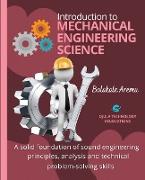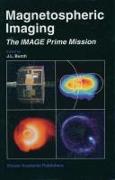- Start
- Introduction to Mechanical Engineering Science
Introduction to Mechanical Engineering Science
Angebote / Angebote:
This textbook is intended for students who are in the first or second year of a typical college or university program in mechanical engineering or a closely related field. Throughout the chapters of this book, I attempted to balance the treatments of technical problem-solving skills, engineering principles and analysis with numerous worked examples. Practice exercises are also included for you to test your understanding of each topic treated in the book.
The book begins with scalar and vector quantities in Chapter 1. In Chapter 2 you will study dynamics. You will learn rectilinear motion of particles, basic equations of motion, displacement, speed, velocity, acceleration, torque, Newton's laws of motion, principles of conservation of energy, momentum and different types of forces. You will also be introduced to the concept of work, energy and power.
In Chapter 3, we will return to statics. We will look at moments and frictional forces. You will learn the laws of Friction, friction on an inclined plane, tractive resistance, and application of friction to brakes and bearings. In Chapter 4, we will move on to circular motion. You will learn about motion in a circle and centripetal force with worked examples.
In Chapter 5, you will study mechanical oscillations. You will learn simple harmonic motion, damped oscillation, forced oscillation and resonance.
In Chapter 6, we will look at the principles of machine, such as mechanical advantage, velocity ratio (speed ratio) and efficiency. You will learn with worked examples application of machines, such as the inclined plane, screw jack, wheel and axle, the hydraulic press, gear trains, the worm wheel, belt tension and belt slip.
Chapter 7 is all about fluid at rest. We will look at pressure at a depth in a fluid, pressure measuring instruments, atmospheric pressure, pressure gauges, surface tension and Archimedes' principle with worked examples. Chapters 8 is dedicated to fluid dynamics. We will look at properties of fluid such as density, viscosity, turbulent flow, Bernoulli's equation and momentum of fluid with worked examples.
In Chapter 9, you will study energy and its uses, and different sources of energy, such as solar, wind. water and biofuels. You will also learn about thermal power station, hydroelectric power station, and so on.
In Chapter 10, I provide a link to download a bunch of practice exercises and answers, and other training resources. You can use them for quick references and revision as well. So, everything you need to help you in your study is here in this book. This will give you more problem-solving and analytical skills. It will also help you to learn some of the calculations and estimates or approximations that mechanical engineers can perform as they solve technical problems and communicate their results. For mechanical engineers to accomplish their jobs better and faster, they combine science, mathematics, computer-aided engineering tools, hands-on skills and experience. My support link is also included in this book for you to contact me any time if you need further help.
Finally, please note that after studying this book, you will not be an expert in mechanical engineering. That is not my intention of writing this book, and it should not be yours for reading it. If my objective has been met, however, you will acquire a solid foundation of problem-solving and analytical skills, which just might form the basis for your own future contributions to the mechanical engineering profession.
Folgt in ca. 10 Arbeitstagen




